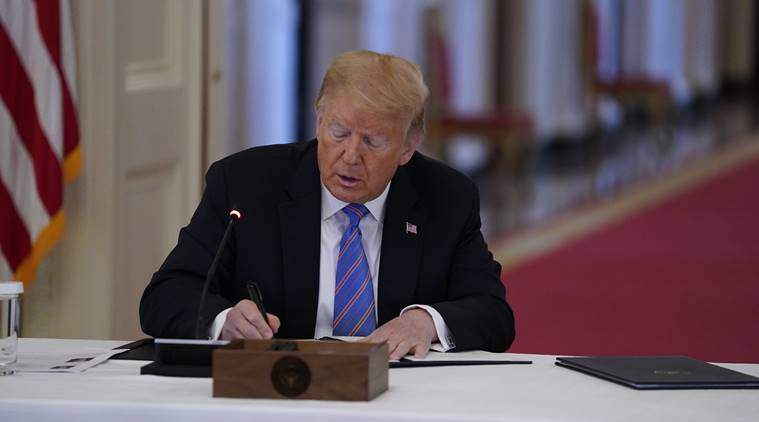U.S. President Donald Trump has signed an executive order to protect monuments. In the U.S. legal system, an executive order is a measure signed by the president that serves to direct the executive policies of the federal government: they become measures with the force of law when they are issued by a legislative authority that delegates its power to the executive. In the United States to date, there are no laws that protect federal monuments tout court (while there are instead laws that more generally protect federal property, and others that address specific categories of monuments, such as those to war veterans): thus, Trump’s order sets a precedent.
The order consists of six sections. The first states the reasons and purposes for the measure: “the primary duty of the government,” it reads, “is to establish domestic order and defend the lives, property, and rights of citizens. In the past five weeks there have been attacks on the lives and property of civilians, law enforcers, government property, and distinguished monuments such as the Lincoln Memorial. Many of the protesters, arsonists, and left-wing extremists who perpetrated and supported these acts explicitly identified themselves with ideologies, such as Marxism, that call for the destruction of the U.S. system of government. Anarchists and left-wing extremists have sought to advance a radical ideology that paints the United States as fundamentally unjust, and they have sought to impose this ideology on Americans through violence and crowd intimidation. They led riots in the streets, burned police vehicles, killed and attacked government officials and business owners defending their property, and even took over an area in a city in which law and order gave way to anarchy. During the unrest, innocent citizens were injured and killed.” According to Trump, these “radical attacks” are thus behind the measure, especially since “key targets of extremists’ violent campaign against our country are public monuments, memorials and statues.”
According to Trump, the protesters’ targets “reveal a profound ignorance of our history, and are indicative of a desire to indiscriminately destroy anything that honors our past.” Trump then lists some of the damaged statues: that of Ulysses Grant in San Francisco, that of World War II veterans in Charlotte, and others (those of Christopher Columbus and Confederate monuments are not mentioned). “My administration,” the first section of the executive order concludes, “will not allow violent mobs, spurred on by radical bangs, to become arbiters of the aspects of our history that can be celebrated in public. The abdication of the state and public officials from their responsibility to enforce the law must end.”
The second section contains the policy directions of the measure, of which there are five. The first states that the United States will prosecute to the full extent of the law anyone who destroys, damages, vandalizes monuments or is guilty of vilification of monuments within the territory of the United States. The order cites Title 18, Section 1361, of the U.S. Code, which establishes penalties of up to ten years in prison for those who damage federal property, and other laws, such as the war veterans’ memorial law, which establish certain precise case law. The second, on the other hand, concerns those who incite violence, sedition and damage; the third talks about punishing those who damage or destroy religious property, and in particular those who attack, remove or erase images of Jesus or other religious figures; the fourth instead states to deny federal support to states and local governments that have failed to protect public monuments, memorials, and statues from vandalism (“The recent abandonment by these jurisdictions of their law enforcement responsibilities with respect to public monuments, memorials, and statues raises questions about their willingness to protect public spaces and maintain peace within them: these jurisdictions are not suitable candidates for the limited federal funds to support public spaces.”); the fifth and final address is similar to the fourth but addresses territorial law enforcement agencies that have not done enough to protect monuments.
The third section of the executive order orders investigations by the Department of Justice aimed at seeing that the above addresses are enforced, and theAttorney General is asked to work with states and local governments to ensure that the laws are enforced. The fourth stipulates limiting federal support for local governments that allow the devastation of monuments, while the fifth mandates ensuring support for the protection of monuments, memorials, statues and properties. The sixth contains a list of final provisions.
“I just had the privilege,” Trump tweeted last June 26 to introduce the measure, “to sign a very strong executive order to protect U.S. monuments, memorials and statues, and to combat criminal violence. Long prison terms for these outlaw acts and against our great country.”
 |
| Trump signs order against anarchists and left-wing extremists who damage monuments |
Warning: the translation into English of the original Italian article was created using automatic tools. We undertake to review all articles, but we do not guarantee the total absence of inaccuracies in the translation due to the program. You can find the original by clicking on the ITA button. If you find any mistake,please contact us.